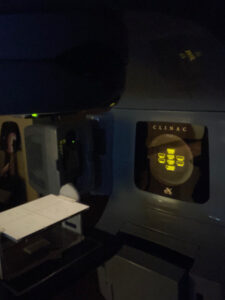Week 9: Types of Treatment
Now it’s the second to last week, and my final topic of discussion is the types of external beam radiation therapy. This is not a comprehensive list of the types of treatments, it is only the ones that I saw personally.
Firstly there is IGRT (Image Guided Radiation Therapy). All of the radiation administered using the Varian iX that I worked with was classified as IGRT. The images referenced in the name are the first CT scans performed on the patient. The CT scans are done with the patient in the same position as they will be in during their treatment, so the computer knows exactly where the radiation is being administered in the body.
The second type is IMRT (Intensity Modulated Radiation Therapy). My last blog post about the steps of radiation dose are the steps for an IMRT procedure. The part that makes an IMRT procedure special is the work that the radiation therapists do to design the plan. In order to administer the radiation to locations inside the body without hurting surrounding tissue, they will often give doses across a person’s body. For example if a person has a brain tumor that needs to be treated on the left side of their head, the machine may give some of the radiation from the right side to make sure the area on the sides of the tumor isn’t damaged. IMRT makes up a majority of cases at Rocky Mountain Cancer Center Boulder.
The final type I want to talk about is SBRT (Stereotactic Body Radiation Therapy). SBRT is usually used as a way to completely kill a tumor in just a few sessions. It is a very high energy short exposure of radiation that typically is used on early stage tumors. SBRT is very effective but contains high doses of radiation and can only be used on tumors with strict boundaries. Because of the super high radiation used in SBRT, the physicist and radiation oncologist must be present during the entire procedure and give the go ahead to progress through the stages during treatment. SBRT also uses extremely advanced monitoring systems beyond the imaging on the machine (most notably infrared cameras that have precise motion detection), that contain automatic kill switches if the patient moves during the procedure.
That’s it for week 9; next week I will recap my project and talk about my experience. Again there’s not many pictures for this discussion so here is a picture of a alignment phantom in the dark:

